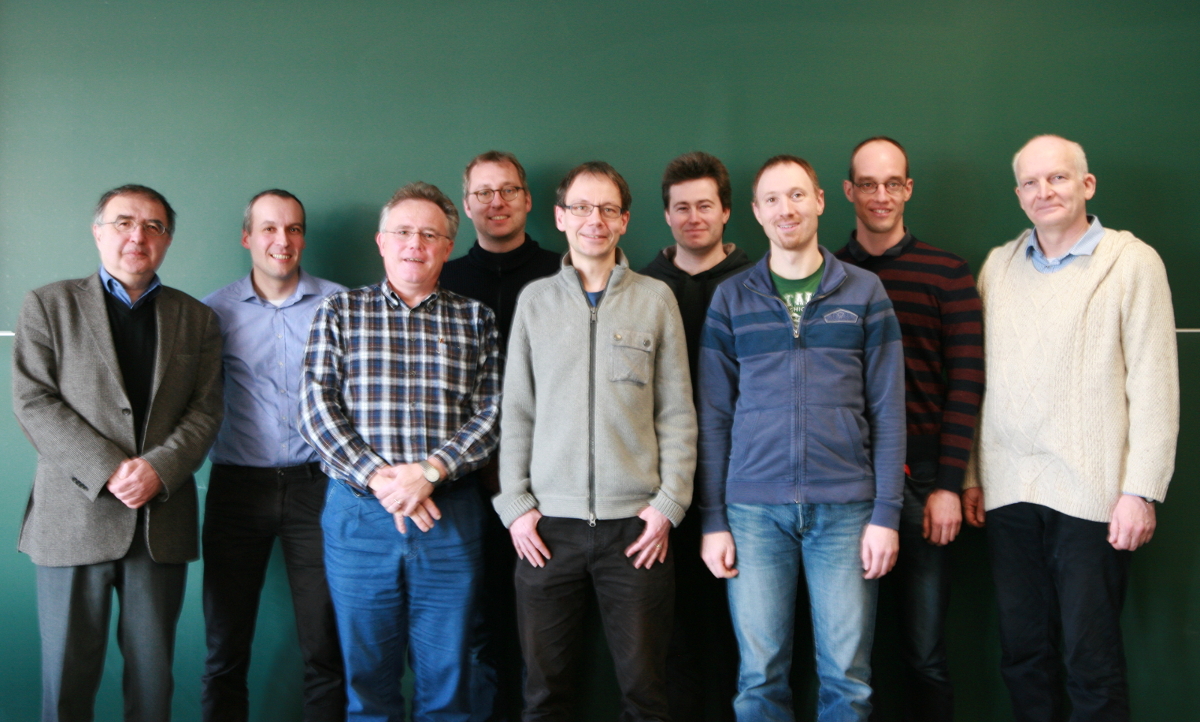

Principal Investigators & Participating Researchers (G. Hiller not in photo) [2nd Funding Period]
DFG Research Unit FOR 1873
The question why we observe three generations of fermions with identical gauge interactions but different masses (“flavours”), is one of the biggest puzzles in contemporary particle physics. Related to this is – according to our current understanding – the problem how the matter-antimatter asymmetry has emerged and how fundamental particles acquire their masses.
The discovery of flavour physics can be dated back to the first observation of weak interactions in the beta-decay of heavy nuclei in the late 19th century. In the studies of elementary particles, decisive hints at the structure of fundamental interactions came from flavour physics, such as the detection of strange and charmed particles, CP violation in strange particle decays and later, the discovery of the third generation of quarks and leptons. These discoveries, together with their theoretical interpretation, belong to the cornerstones of contemporary particle physics and several of them have been awarded with Nobel Prizes and other, highly prestigious awards.
This long development led to our current understanding which is encoded in the Standard Model (SM) of particle physics. It provides a fundamental explanation of how the observed interactions emerge from symmetry principles. However, the triplication of the particle spectrum as well as the mixing among the three fermion generations remains unexplained. Here the SM only provides a parametrisation which, however, turned out to be phenomenologically very successful.
Over the last twenty years, dedicated large-scale experiments have been performed to test the flavour parametrisation of the SM, but, at the level of the current precision, no significant deviations have been observed. Still, the flavour sector of the SM has not yet been tested to the ultimate precision. Currently running and future experiments will explore a variety of rare flavour transitions with small systematic and statistical uncertainties and may give us a clue to a deeper understanding of the phenomenon of “flavour”.
The purpose of the proposed research unit is to investigate the theoretical framework of flavour physics with a focus on the quark sector. The extraction of fundamental parameters from data is in most cases rather indirect, since only processes with hadrons are observable in nature. Hence a quantitative treatment of strong interaction effects is mandatory for reliable predictions. The proposed research unit combines expertise in fundamental flavour physics (from both theoretical and phenomenological perspectives) with systematic field-theoretical methods to treat Quantum Chromo-Dynamics (QCD), the theory of strong interactions.


